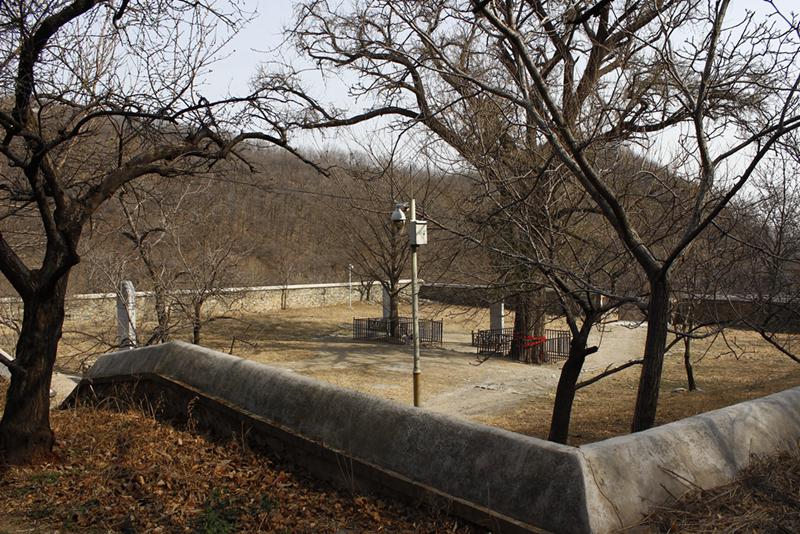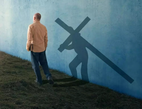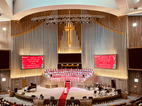Preface
Christianity, the largest religion in the world with the largest number of believers (including the three major branches--Catholicism, Eastern Orthodoxy and Protestantism), has a long history of its spread in ancient China. According to the records, Christianity began to spread in China in the early Eastern Han Dynasty soon after it was founded in the Middle East. At present, historical evidence points to its introduction as " Nestorianism ", which occurred in the middle of the Tang Dynasty. For various historical reasons, the temple of Tang Nestorianism has long been lost. Tang Nestorianism, however, is still somewhat preserved in a variety of ways outside the central plains of China. During the Yuan Dynasty in China, besides Christianity's spread in the form of "arkagun”, there were Nestorian church buildings. There are the ruins of an ancient Nestorian (church) temple which was built in the Yuan Dynasty. These ruins are the oldest Christian (church) temple site and can be said to be "the first site of a temple in Chinese Christian history", whether Catholic, Orthodox or Protestant history. Here is one of the holiest places of the Christian faith in the vast land of China and a place of pilgrimage. For others, here is a key cultural relic under state protection--one of the important holy places of colorful Chinese classical culture.
1. Site information and cultural relic value
Beijing Fangshan's Nestorian Cross Temple, a famous Nestorian temple in China, is the oldest and only complete site of a Nestorian temple found in China and the only one in the country containing such cultural relics as documents, ruins, and cross stone inscriptions. The site is located in the end of the three deep forest valley of north lumen valley, Chechang village, Zhoukoudian town, Southwest of Beijing's urban district.
Fangshan Cross Temple has been in ruin for many years. There are five visible relics of the temple's foundation which face south. In the courtyard there is a large, lush, male ginkgo tree which was planted in the Yuan Dynasty, It is a "sighing tree" prototype described by dramatist Jiang YuanLai in the large drama "Lanlin Easter" . The tree's story has become a legend in China and abroad. (Another female ginkgo tree was struck by lightning and a new one, at present smaller than the other, was planted afterwards.) There are two marble tablets in the temple, one of which is the Liao tablet, on the top front of which was inscribed: "the inscription of Chongsheng courtyard of Sanpen mountain” in the decade of the Liao Yingli calendar (960 A.D. ). The tablet is 204 cm. high, 91 cm. wide and 20 cm. thick. The other is the Yuan tablet, with a cross in the ball of the top of the forehead, a stone dragon carving on the left and right and the inscription "Imperially bestowed as Cross Temple" inscribed in the center, all done in a 25-year period during the Yuan Zhizheng (1365 A.D.). The tablet is 307 cm. high, 92 cm. wide and 20 cm. thick. Near the tablet there are 2 tortoises carved from white marble and 4 stone column bases with a length of 78 cm. on the side and a height of 20 cm. The bases are inscribed with a sunflower-pattern. The flat disc is 54 cm. in diameter, around which is carved 16 petals in a clumped-cloud pattern.
There are also a few column bases scattered in the courtyard in Cross Temple which are of historical and artistic value. They have a square base, 48 cm. in diameter, and are carved with in circular-lotus design, in the middle of which a stone pillar can be placed. These marble columns have a pure Chinese style, probably a relic of Ming Dynasty.
Beijing Fangshan's Cross Temple and its inscriptions are unique in mainland China, and its religious and cultural values are unparalleled. Therefore, on May 25, 2006, the state council approved it to be included in the sixth group list of national key cultural relics to be protected.
2. Historical Evolution
Beijing Fangshan Cross Temple was built in the first year of Jianwu in the Eastern Jin Dynasty (317 A.D) and was originally a Buddhist temple. It became a Nestorian temple in the Tang Dynasty and was known early as Chongsheng courtyard. Due to the great changes in the official religious policy in history, Nestorianism was once marginalized. This place was restored to a Buddhist temple in the Liao Dynasty, rebuilt between 952 and 958 in the Yingli calendar, and was renamed Chongsheng courtyard of Sanpen mountain. (Some contemporary scholars however have speculated that it might have been the name of a Buddhist monastery during this period but actually remained secretly and with difficulty within the Nestorian tradition. If so, this makes it the oldest historical site in China where the tradition of "house church" has existed since the beginning of the two-thousand-year history of Christianity and therefore has a more significant meaning. In the Yuan Dynasty the temple resumed the Nestorian tradition and was re-established. Emperor Shun conferred on it the name, "Cross Temple".
The restoration of Cross Temple of Yuan Dynasty is related to Rabban Sauma (1225-1294), a famous Nestorian leader amongst the Uyghurs during the reign of Kublai Khan, and an important historical figure in the history of Christianity. Rabban Sauma was baptised as a Nestorian at 23 and at 30 years of age spent six years in an underground school. Historically, he was said to have lived alone in a cave near Beijing as a hermit. Akmal Moore thinks Cross Temple may be the site of Rabban Sauma's cloister. As an emissary of the central Asian church, Rabban Sauma traveled to the west and reached Italy and France, becoming the furthest traveller in ancient China. In order to commemorate his achievements, the Dadu Nestorians rebuilt Chongsheng courtyard between 1320 and 1330, and set up a monument in the year Zhizheng 25 (1365 A.D.), on which was inscribed with the words, “Imperially bestowed as Cross Temple" and signed by the famous scholar Huang Jin (1277-1357) near the end of the Yuan Dynasty. Some scholars, however, doubt that it was done by someone in the Ming Dynasty because the tablet inscriptions were written after Hang Jin’s death.
With the establishment of the Ming Dynasty and the imperial court's attitude of wiping out the culture of the Yuan Dynasty in the early Ming period, the history is repeated here, After the Ming and Qin dynasties, this place again became a Buddhist temple. In the 14th year of Jiajing of the Ming Dynasty (1535), Cross Temple was renovated for the last time as a Buddhist temple. Because of wind and rain erosion, the inscriptions on the Liao and Yuan steles in the temple were also re-inscribed and marked on their backside. During the sixth year of the Republic of China, the temple still had the plaque of "the ancient temple cross zen forest", the relics of which are now collected by the Beijing Stone Carving Art Museum. Since the decline of the Republic of China, only ruins remain today.
In July 1919, a westerner by the name of H. I. Harding first reported the temple and its Christian name in The New China Review (p.321). Church historian Arthur Christopher Moule, in 1930's "Christianity in China Before the Year 1550," referred to Cross Temple: "Located in the foothills of Sanpen mountain, Cross Temple is 67 miles northwest of Fangshan county and about 40 miles southwest of Beijing. Near the temple is a river, and on the door is written 'ancient temple cross zen forest.'"
In 1931, Japanese scholar Yoshiro Zuber made a field visit to the site and gave an overall description of the architectural layout of the temple in his book, “The Christian studies of China”.
3. A stone-carving placed elsewhere
There are two original stone carvings in Cross Temple. In the summer of 1919, a foreigner named Christopher Iwan found them when taking shelter from the rain in Cross Temple. The stone carving is made of white marble which is 68.5 cm. high, 58.5 cm. wide and 58 cm. thick with a delicate pattern and a distinct image of a cross. One of the stone carvings had a cross on the front and an inscription in ancient Syriac on the bottom, which, according to experts, is translated as: “Look Towards Him. Place Your Hope On Him” (Ancient Syria was one of the earliest areas to where Christianity spread).
On the right side of the stone carving was inscribed a number of chrysanthemums, and on the left side a clump of winter grass. The other stone carving has a cross on the front, no Syriac characters, and two hearts in the shape of a peach facing each other. The upper ends of the two stone carvings are concave. They are the two cornerstones acting as supporting pillars, sitting north and facing south, and belong to the southeast and northwest corner respectively, of the main hall of Cross Temple.
In November 1931, the stone carvings originally stored in Cross Temple were collected and displayed by the Beijing history museum.
In 1936, during the period of "cultural relics being moved to the south" due to the war ,they were kept in the Nanjing museum. The exhibition hall of Nanjing museum still displays a piece of " Nestorian cross stone carving from the Yuan Dynasty of Fangshan county”. The other one is stored in the warehouse.
4. Description of the surrounding landscape of the site
In the courtyard behind the Liao and Yuan steles, the cultural relics department has set up a new copy of "the popular Chinese steles of Nestorianism of great Qin" stored near the forest of steles in Shaanxi province, and which used to be historically compared with Cross Temple monuments.
Cross Temple is surrounded with beautiful scenery. There is a mountain stream on the right side of the site, usually the water flow is clear enough to see the bottom, and the sound of waves can be heard day and night in rainy season. Walking along the stream's bank from the rear entrance of the site to the cable bridge, one encounters the deep mountains and forests. There is a lush variety of fruit trees around Cross Temple, which is especially known for its finest quality product-- "good town chestnuts". Wild flowers are everywhere and various rare birds and animals haunt the forests.
Behind Cross Temple is beautiful Sanpen mountain. Nearby is Jinling ruins, which is key nationally protected cultural site.
5. Transportation routes around the site
At Guang 'anmen, in Xicheng District, Beijing, board the bus No. 917 to Zhangfang. It takes about 70 minutes to reach the intersection of Zhoukou village. Then change to Fangshan bus No. 38 to Chechang village road, the terminal. It is about 800 meters from the bus station of Chechang village to Cross Temple.
- Translated by: Liu Chengxia
(The original translation is from WeChat account "Guleheming". CCD reprinted with permission.)











